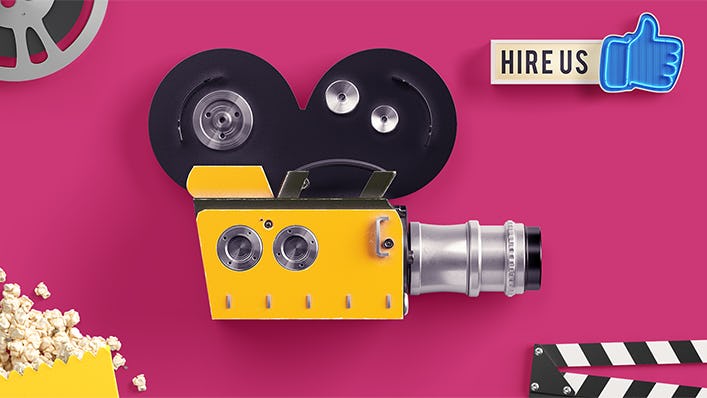4 Ways a Media Strategy Can Help Your Marketing Plan Succeed
Launching a new media campaign requires a big investment on your part. Along with the production of the videos and ads, you need to properly map out a way to distribute the ads to the proper audience. A blanket release of ad content will only go so far and create a lot of wasted opportunities.
When you work with media buying services, you have the opportunity to plan out a media strategy. Follow this guide to learn multiple ways a media strategy can help your marketing plan succeed and reach the biggest audience possible.
1. Launch Options
Commercials used to have a simple launch format through television shows. However, digital technology has completely changed how you can launch media. While the options may seem overwhelming, the specific choices allow you to target a specific demographic.
A digital media launch can include website services like YouTube, streaming applications like Hulu, or social media platforms like Instagram. You could also run ads on things like gaming apps. The launch option you choose can make a big difference in your media strategy.
For example, you could launch on a streaming service that offers five-second playback with the user's ability to skip the rest or a forced play option where the user must watch the whole ad through. The availability of a skip option could change the way you format the ad. You could put more information on the front end so viewers understand the message and branding.
2. Data-Led Feedback & Engagement
The choices you make beforehand will help the launch of the ad, but so will the data a media service company receives after the ad gets launched. Data comes in fast for ad releases and can lead to almost instant feedback. A media service company can analyze the data and engagement from viewers.
With ads that users can skip or scroll past, media service companies can see how long the viewer watched an ad. You can see how many users clicked through an ad and went to an actual website or additional video content beyond the initial ad.
The data analysis can make a big difference in the way you move forward with your media strategy. You may find success on certain platforms and see if the engagement works better than others in some cases.
3. Alternate Ads & Target Demographics
The media strategy you implement doesn't have to include just a single ad campaign. You have the ability to present different ads and target different demographics with a few minor changes and adjustments. Small changes and adjustments can make a big difference in the success of your ad.
Even small changes like the main promotional message or music used in your ad could make a difference. For example, you may choose to run ads during a sports program. A lead actor in the ad could wear a sports jersey and appeal to those audiences.
When you start your media strategy in the pre-production stage, you have the opportunity to make slight changes and have a full plan. The target demographics you reach can make a big difference in the success of your ads. You could target specific ages, genders, or geographical areas as you launch ads.
4. Adjustments & Changes
The real-time data, access to alternate ads, and use of multiple platforms allows your media strategy to change and adjust as needed. You do not need to remain stuck with a platform or release strategy that does not have the feedback and engagement you seek. With a media service, you can make adjustments and changes as needed.
For example, if an ad runs too long and the viewing average is way below the 15-second mark, then you may decide to adjust your 30-second ad slot purchases to a 15-second purchase. A media service company can see what platforms your ads work best on and shift content to those services rather than spread the ads thin.
The use of motion graphics and quick video editing resources also allows a media strategy company to change ads, improve content, and draw in more viewers. For example, you could use the same video content for an ad and then use motion graphics to add in more current promotions or special deals.
The quick changes and access to digital files prevent the need for a whole new commercial. You can choose the text content and help engage viewers with some of your new promotions. Once adjustments get made, a media content professional can look at the real-time data to see the effectiveness and then make further adjustments as needed.
The whole process uses dynamic changes so your ad is not just a static video without the ability to adjust and adapt to the fast-moving world of technology.
Media buying is a critical strategy for businesses in the finance, crypto, healthcare, and sports industries to reach their target audiences effectively. For the finance industry, media buying can involve investing in targeted online ads on financial news websites, using financial influencers to promote their products or services, and investing in search engine marketing campaigns. In the crypto industry, media buying can involve promoting their products through social media platforms such as Twitter, LinkedIn, and Reddit, as well as advertising on crypto-related websites and blogs. The healthcare industry can use media buying to target audiences through online advertising campaigns and investing in social media marketing, while the sports industry can use media buying to reach sports enthusiasts through sponsored content on sports websites, television advertising, and influencer marketing campaigns. In all of these industries, careful research and analysis of audience demographics and behavior is crucial in determining the most effective media buying strategy.
For more information on media content and distribution strategies, contact us at Colormatics. We will help you plan a media strategy that gives you the most success and helps you grow your brand in the long run.


